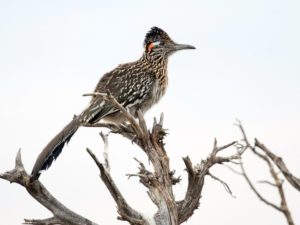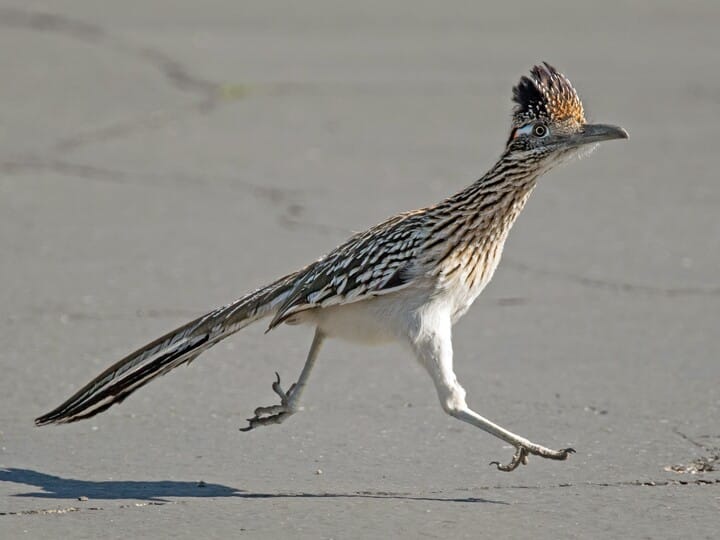
The greater roadrunner has been the New Mexico state bird since 1949, and they have thrived in urban areas like Albuquerque since the early 1900s.
Assistant Chief of Information Ryan Darr with New Mexico Department of Game and Fish said it is estimated that 120,000 roadrunners live in New Mexico, giving the state about 14% of the U.S. population and 8% of the global population of 1.4 million.
Darr said the department doesn’t track annual populations on a small scale but that they have received reports of increasing numbers of roadrunners in the ABQ area in recent years. According to allaboutbirds.org, breeding populations have increased close to 1% between 2016 and 2019.
Much debate on social media about the rise in roadrunner sightings had folks speculating on the topic via reddit, with people attributing the change to the “proliferation of xeriscaping and expanded use of desert plants” to an uptick in many different species with local wildlife roadrunners thrive on. Scientist have noticed more and more species of other birds that flock here staying throughout the year and acclimating to New Mexico with recent climate changes and, given a more hospitable environment, could change the local ecosystem for the better.
The Audubon Society says that roadrunner populations in New Mexico have doubled since the 1960s. Due to climate change, the state bird is able to thrive in a hotter and drier environment, which also allows them to be in more urbanized areas with larger populations of their prey, including insects, scorpions, bats, mice, lizards and small snakes, as well as other small fowls. Roadrunners have expanded beyond the Southwest, migrating to states as far north as Missouri and southeast to areas of Louisiana.
The Secretary of State website explains the importance the state bird has to New Mexicans, saying, “There is probably no state bird more closely connected to the people of the state than the greater roadrunner is to the citizens of New Mexico. Early settlers, for example, were told that if you got lost a roadrunner would always lead you back to the path for which you were searching. Many Native American groups said that the spirit of this bird has supernatural powers. Hopi tribes used the ‘X’ on Kachina figures to confuse evil spirits because the ‘X’ footprint of a roadrunner doesn’t show which direction the bird is traveling.”
Roadrunners tend to live at elevations lower than 7,000 feet and can fly, but often with hesitation for small periods of time. They’re considered ground cuckoos that can run up tho 26 miles per hour and often nest 3-10 feet off the ground in bushes, trees and cacti. According to the New Mexico Nomad blog, roadrunners mate for life and have elaborate courtship rituals.
It seems these birds are also not shy when it comes to interacting with people and often hang out close to human dwellings, which is usually a welcome sight. The highly social bird appears to love the camera, as many amateur photographers can attest from their yards and neighborhoods.
Although the roadrunner is a predatory bird, it is also a protected species in the U.S. and state of New Mexico. Getting caught harming, possessing or harassing one could carry fines up to $10,000 and could put someone in jail for up to 10 years, according to the Migratory Bird Treaty Act (MBTA) and New Mexico Game and Fish.
“Residents can also help conserve desirable urban wildlife by reducing threats, such as keeping cats indoors. The same extends to taking actions to avoid attracting potentially unwanted wildlife such as bears or raccoons. Residents should avoid leaving out accessible garbage cans or pet food. In fact, conditioning any wildlife to these food sources can have negative repercussions,” Darr said.
Roadrunners would instead like dried mealworms from feed stores and often eat fruits and seeds from cacti. They tend to make their hunting rounds at areas with xeriscaped rock formations that house lizards and other insects and like soft, sandy soil areas. For more information on helping to give the roadrunner a better home to live, check out the link here. To submit a photo of roadrunners from your area to our site’s neighborhood gallery, click here.
Photos provided at allaboutbirds.org


